Best Musky Lures
Like the seven hills on and about which Rome was built, if you add these seven types of lures to your tackle box you can reduce your time on the water and make less than the proverbial 10,000 casts to hook a big one.
Surface Lures
Sound is more important than colour with surface lures. Go beyond the typical, calm water casting of this lure and try it when there is a nice foot or higher chop on the water. On pressured water, a lot of lures are presented to the fish over and over again so try and make your surface lure stand out. A single prop surface lure can be modified by unscrewing the prop screws that attach to the head. This results in less line twist, makes a different sound and runs more easily through weeds.
A steady retrieve is a good way to call in a big fish. If you see a musky following, try adding a burst of speed as this can often trigger a strike. This lure is great for surface figure eights at boatside to entice following muskies, just keep it going around and around until the fish either hits or leaves.
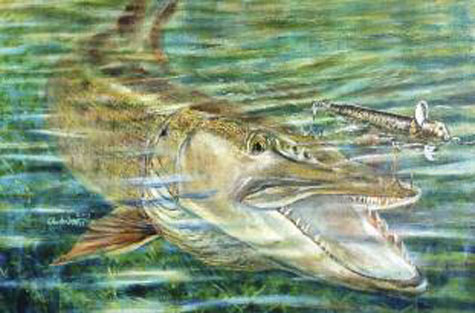
Pro Tip:
“It helps to have the right weather – specifically a warming trend with relatively high humidity. And of course, they’re great at sunset and just before a front rolls in.” ~ Andy Pappas / Vicious Fishes Guide Service
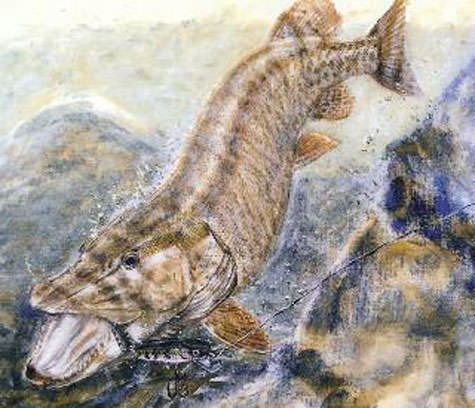
Pro Tip:
“Troll them high in the water column during the fall, by that I mean above whatever vegetation remains. Muskies will venture onto feeding flats on lakes or rivers on the lookout for perch or suckers. Since flats get quite large in size, trolling is the most effective way to cover the water. Lots of flats that I work in this way range in depth from 7 to 12- feet” ~ Hedrik Wachelka / Ottawa, Muskies Canada
Crankbaits
There are literally hundreds of different musky crankbaits of different brands, sizes and colours. The key is to find the one for the right condition.
Early in the season something small and shallow running might be a good choice. By the time the leaves are turning colour, a large eight-inch or longer jointed crankbait will probably be the best way to go.
Matching the bait’s colour to a local prey fish pattern – like shad, sucker, shiner or yellow perch – can be extremely effective in getting strikes. Your casting retrieve speed or trolling speed should be slightly slower in the cool water periods than it is in the summer. If the fishing is slow, try deeper, open water areas that are near your usual summer fishing areas.
Double Blade Bucktail Spinners
To get late summer or early fall muskies to bite, try casting or trolling a double-blade inline bucktail spinner. They are a straightforward, “crank and reel” kind of lure. At boatside, you can sometimes coax a following musky by turning your retrieve into a figure-eight. Usually, a fish will strike as you are going into or out of a turn.
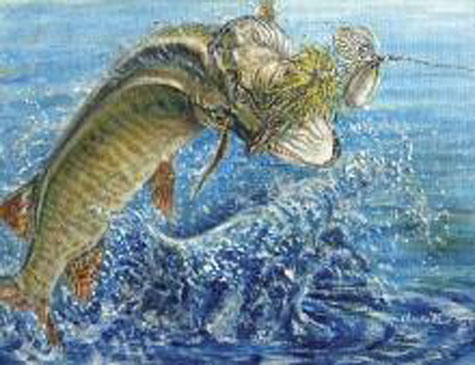
Pro Tip:
“I have been pleased with the success these lures have had in the fall. Usually I fish them around remnant green aquatic vegetation in shallower water, usually less than eight-feet or so, and keep the pace of the retrieve slightly slower than in summer.” ~ Hedrik Wachelka / Ottawa, Muskies Canada
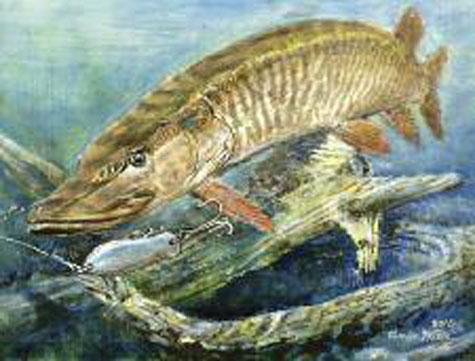
Pro Tip:
“You have to keep them (spoons) in the two to two and a half-mile per hour range or they will twist your line into a knot. Good heavy swivels are a must as are leaders that use twin swivels. Monofilament line works better than braided or Dacron for running spoons.” ~ Steve Wickens / Kawartha Musky Angler
Spoons
Spoons are not just a lure for northern pike, they are a good choice for muskies too. Add a swivel above the leader and to where the lure connects to help prevent line twist. A five to six-inch long spoon with a narrow body that resembles a salmon spoon, but is made of thicker metal, is the ideal style.
The retrieve can be varied, from a straight reeling style to a jerkbait type retrieve with a start and stop rhythm. An erratic, fast darting action is preferred but don’t be afraid to experiment. Racing it along the surface is another method that gets the attention of muskies. Your imagination will be the only limit to your retrieve style. Try spoons along submerged weed edges but if the action is slow consider trying the deeper water, away from the weed edge.
Spinnerbaits
Covering the water by casting or trolling with spinning blades that target active and aggressive muskies is a smart way to fish. From the middle of the summer through to the fall season this method is hard to beat in terms of efficiency and productivity. Try along submerged weedlines, gravel rip rap and sandbars, and don’t be afraid to go as shallow as four-feet. You can cover more water by trolling with 50 to 100-feet of line behind the boat than you can by casting, especially when you’re fishing expansive flats. Consider shortening the line and increasing your boat speed to make the blades burst out of the water. This can attract and trigger any feeding muskies in the area.
Pro Tip:
“Troll flats and edges on shallow cover elements of structure, like along weedlines and other breaks of this type, especially in early fall. They (spinnerbaits) can be counted down and used to fish the base and through weed edges, as well as around rock piles and bridge abutments. This is a bait that is loud underwater and can be banged and dragged through pieces of cover.” ~ Hedrik Wachelka / Ottawa, Muskies Canada
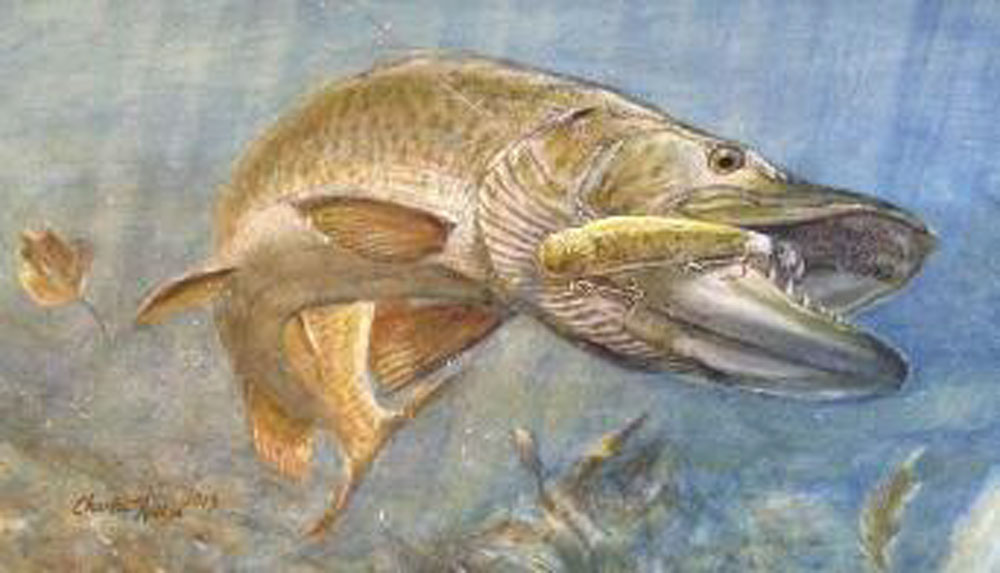
Glide Baits
These lures demand an extra level of attention from the angler during the retrieve. For the best results they should be retrieved with a constant series of twitches and taps of the rod tip while it is pointed down at the water. This creates a zigzag forward motion, similar to a “walk the dog” retrieve, only under the surface of the water. The quick “tap-tap-tap” of the rod tip imparts an action and rhythm that mimics the short, darting pattern of a small panfish. Should you see the large shape of a following musky, keep the retrieve going – don’t hesitate or stop. When the fish strikes, wait until you feel weight and then set the hook. Use a slower retrieve in the colder fall months and remember to keep the lure faltering and looking like an easy meal. Try this method over shallow or deep water.
Pro Tip:
“Glide baits are not only great casting baits, but they are amazing trolling baits. You can’t troll fast enough to blow out the action.” ~ Steve Wickens / Kawartha Musky Angler
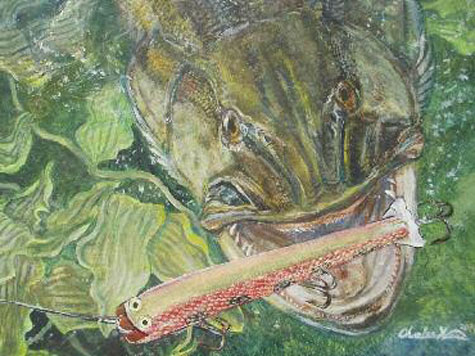
Jerkbaits
Jerkbaits are similar to glide baits in that they require you to point the rod tip down and use a constant stop-and-pull (jerk) retrieve. Some designs are weighted and will rise very slowly after a pull. Experiment with the length of the pauses and pulls as well as the frequency. Sometimes letting the lure float completely to the surface will trigger a musky that wouldn’t chase down the bait. Trial and error is the only way to determine the best retrieve on any given day. Jerkbaits are best fished on a long rod, between seven and eight-feet, with a medium to heavy action.
What is your favorite type of lure for musky fishing? What have you had the most success with? Let us know in the comments below!

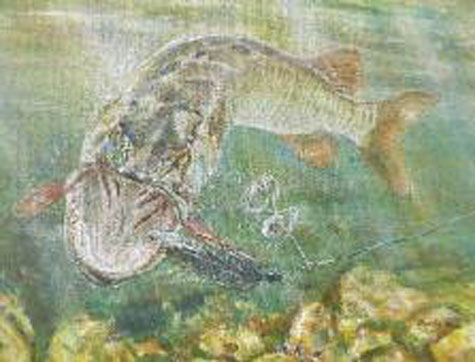

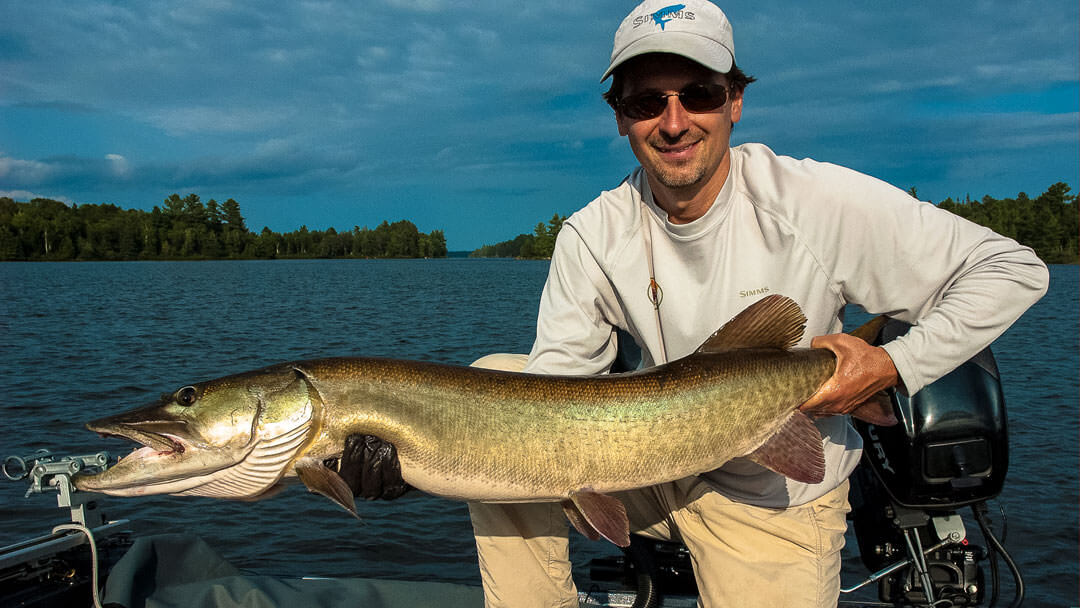
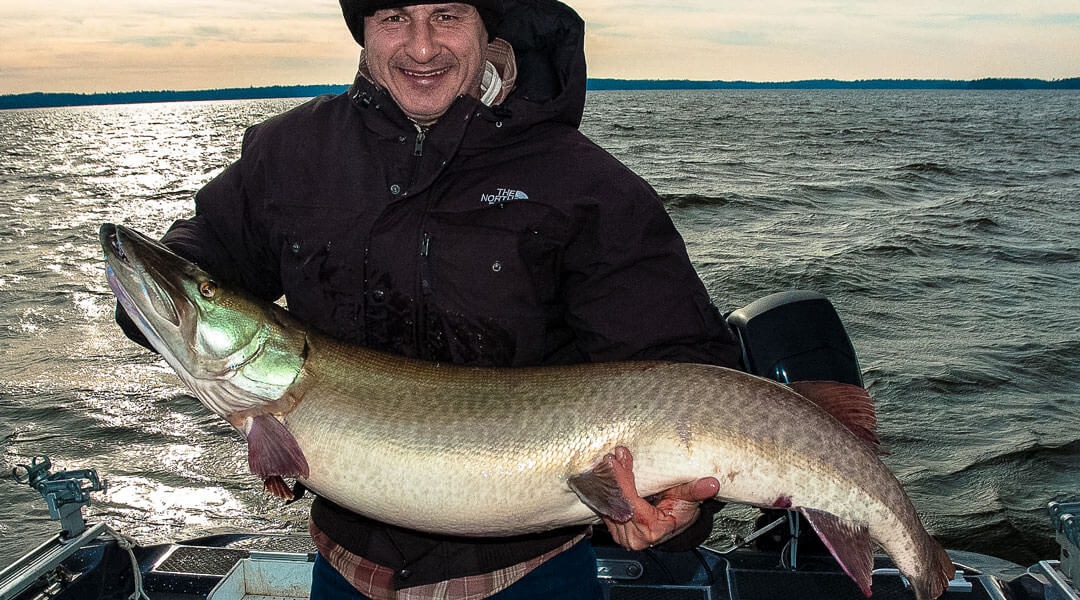
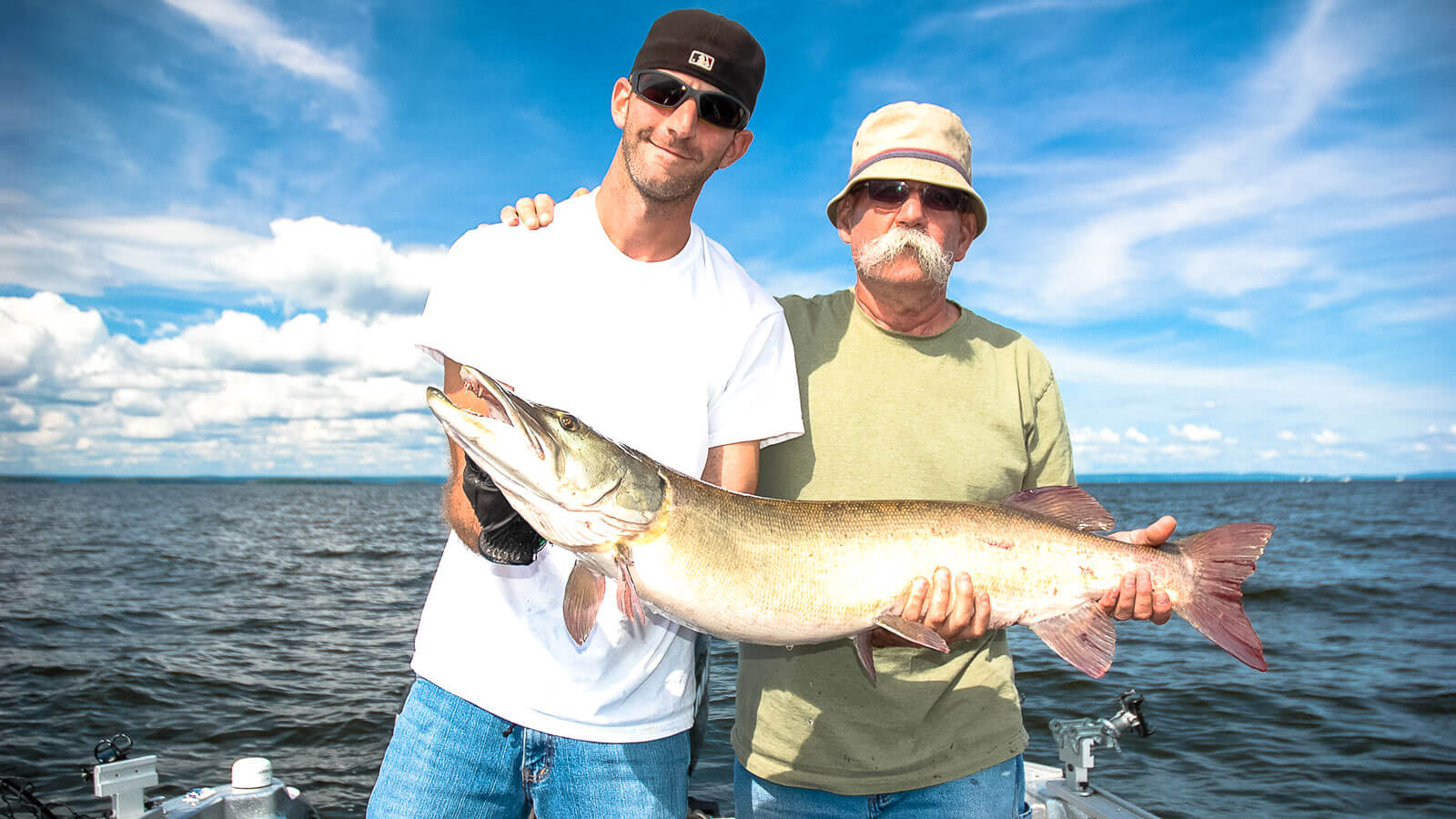
Wonderful story on the seven magnificent muskie lures! This story might be interesting to first time muskie anglers but I hope the artwork inspires the experienced muskie anglers!